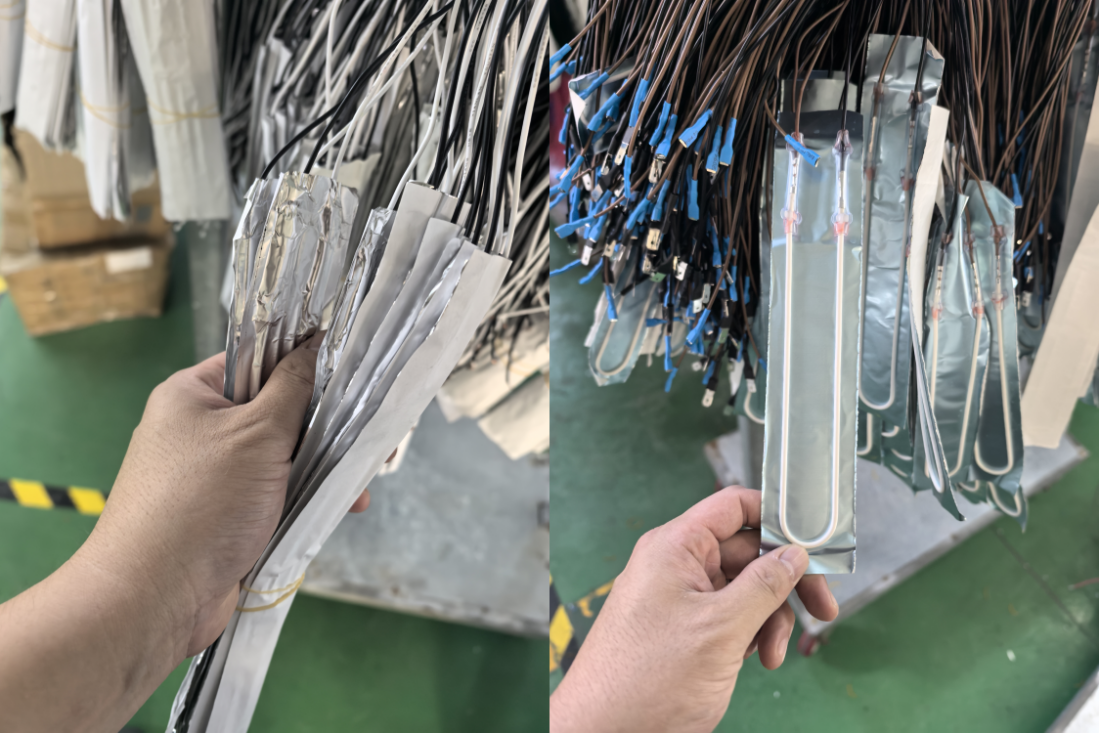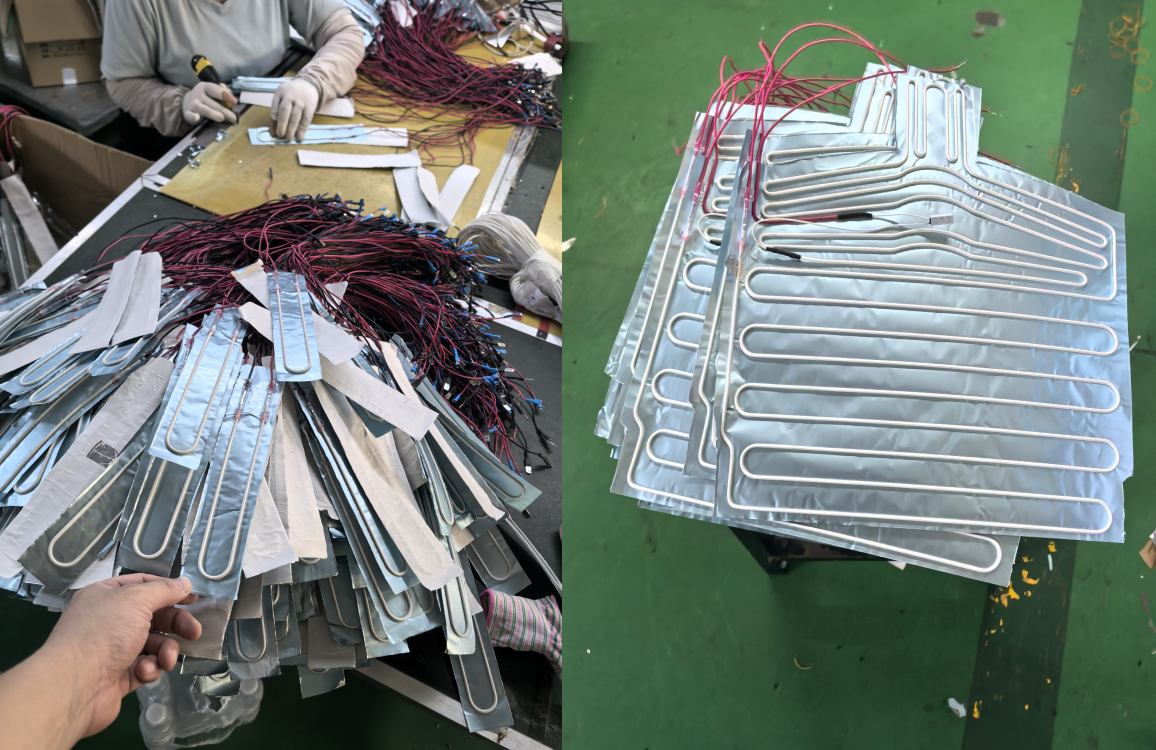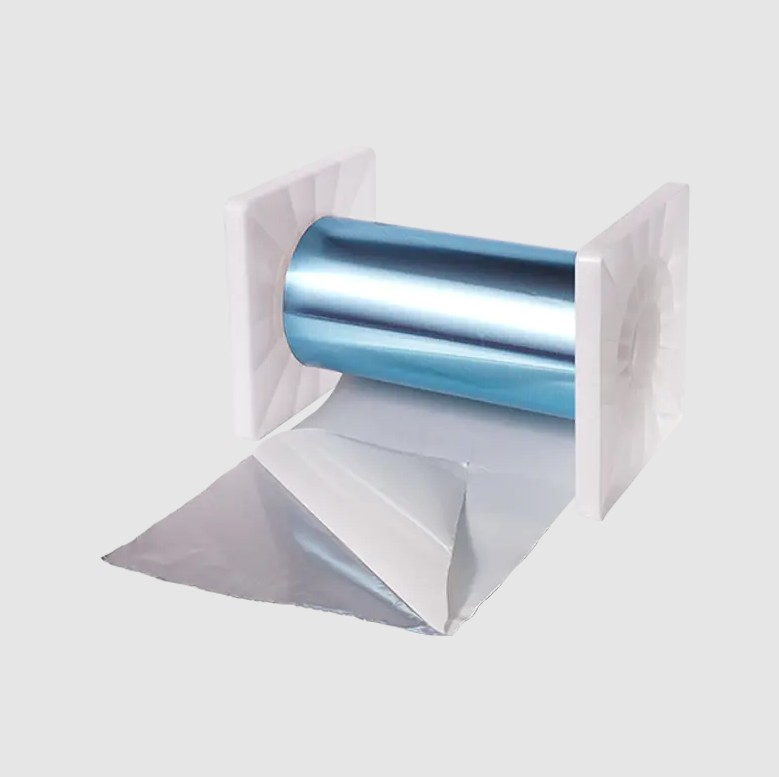Heat-Seal Aluminum Foil Tape with liner is a composite product consisting of an aluminum foil base, a pressure-sensitive adhesive layer coated on the back, and an additional release liner. The aluminum foil layer is typically made from high-purity aluminum through rolling, boasting excellent ductility and sealing properties; the pressure-sensitive adhesive layer is formulated according to specific application needs, adaptable to various environments such as normal and high temperatures; the liner, mostly made of paper or plastic film, primarily functions to protect the adhesive layer from contamination while facilitating easy peeling and cutting during construction. This structural design retains the original properties of aluminum foil while enhancing usability, making it particularly suitable for scenarios requiring precise operations. Compared to ordinary aluminum foil tape, the liner-equipped design prevents adhesion during storage and transportation, maintaining its adhesiveness for a longer period, thus serving as a common sealing and protective material in industrial, construction, and other fields.

The characteristics of HSL foil tape with liner enable it to perform stably in diverse environments. Firstly, it exhibits excellent sealing performance. The metallic nature of aluminum foil allows it to tightly adhere to various surfaces, effectively blocking the intrusion of air, moisture, and dust. Whether applied to smooth pipe exteriors or rough wall surfaces, it can form a reliable sealing layer. Secondly, it boasts remarkable temperature resistance. High-quality products can withstand temperature changes from -40℃ to 150℃, maintaining stable performance in high-temperature pipe insulation or low-temperature equipment protection without cracking or peeling due to drastic temperature fluctuations.
Furthermore, the liner-equipped design offers significant operational advantages. The presence of the liner allows the tape to be cut into any shape and length. During construction, simply peeling off the liner reveals the adhesive layer, enabling accurate application to the target position—avoiding the issue of ordinary tapes being difficult to adjust due to excessive stickiness. Meanwhile, the pressure-sensitive adhesive layer maintains long-lasting stickiness,preventing edge lifting after application and ensuring solid adhesion over an extended period.Notably, the aluminum foil base endows it with certain corrosion resistance, allowing it to remain structurally intact even in humid or slightly chemically aggressive environments without easy rusting or damage, a feature that facilitates its wide use in outdoor projects.
In construction engineering, HSL foil tape with liner is a key auxiliary material in insulation systems. During wall insulation layer construction, it seals gaps between insulation boards, preventing the circulation of hot and cold air through these gaps and thereby enhancing overall insulation efficiency. In roof waterproofing projects, it can be applied to the overlapping areas of waterproof materials, strengthening the waterproof layer’s sealing and reducing the risk of water leakage. Additionally, in ventilation pipe installation, it effectively seals pipe joints, ensuring efficient air delivery while preventing condensation inside the pipes from damaging walls.
In industrial fields, its applications are equally extensive. In electronic equipment manufacturing, it is often used for shielding and protecting circuit boards; the conductive properties of aluminum foil reduce electromagnetic interference, safeguarding the normal operation of equipment. In automobile manufacturing, it secures and seals pipelines in the engine compartment, withstanding high temperatures generated during engine operation. In household maintenance, it also proves useful—repairing damaged smoke pipes, sealing air conditioning pipe connections, and even protecting kitchen range hoods from oil contamination, as its metallic surface is easy to clean, minimizing troubles caused by oil adhesion.

Before using HSL foil tape with liner, surface preparation is crucial. Regardless of the material surface, it is essential to remove dust, oil, and moisture—using a dry cloth for wiping or light sanding to ensure the surface is dry and smooth, which guarantees full adhesion between the tape and the surface. For curved surfaces with large curvature or irregular shapes, a trial application is recommended to check the tape’s conformity. If necessary, cut the tape into small sections and apply them one by one to avoid waste from improper one-time application.
During construction, mastering the liner peeling technique is vital. For longer tape lengths, peel off approximately 5 centimeters of the liner first, fix this section to the starting position, then slowly peel off the remaining liner while pressing the tape flat toward the other end with a scraper or roller, ensuring no bubbles or wrinkles form between the tape and the surface. If bubbles appear after application, pierce them with a needle and squeeze out the air with a scraper to ensure sealing effectiveness. When cutting, reserve a certain length according to actual needs—especially at pipe bends, sufficient allowance is required to accommodate the corner’s curvature, preventing tape breakage from excessive stretching.
Storing HSL foil tape with liner requires attention to environmental conditions. It should be kept in a cool, dry warehouse, away from direct sunlight and rain. The ideal storage temperature is 10℃ to 30℃, with relative humidity not exceeding 70%. The tape should be stored in rolls, not folded or squeezed, to prevent premature adhesion between the liner and adhesive layer, which would hinder peeling during use. For partially used tape rolls, wrap the cut end with plastic wrap and return them to the original packaging to reduce adhesive exposure to air and delay viscosity loss.
In terms of maintenance, applied tape should avoid frequent touching or friction—especially within 24 hours of application, as excessive disturbance may cause separation from the surface. If slight edge lifting occurs, wipe the lifted area with a dry cloth, gently heat it with a heat gun, then press it firmly with a scraper to re-adhere. For tape exposed outdoors for a long time, regular surface inspections are advisable. If damage or corrosion is found, promptly cut new tape for repairs to ensure the continuous effectiveness of sealing and protection functions.
